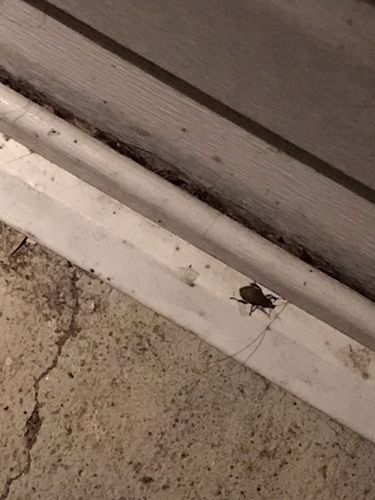Cockroach (likely American Cockroach or similar large species)
Scientific Name: Periplaneta americana (if American Cockroach, or other species like Blattella germanica for German Cockroach, etc., identification from image alone is difficult for exact species)
Order & Family: Order: Blattodea, Family: Blattidae (or other cockroach families depending on species)
Size: Typically 1.5 cm to 5 cm (0.6 to 2 inches) depending on the species. The one in the image appears to be on the larger side, consistent with American or Oriental cockroaches.

Natural Habitat
Cockroaches thrive in warm, humid, and dark environments, often found near sources of food and water. They typically inhabit sewers, drains, basements, wall voids, kitchens, bathrooms, and other areas within human dwellings or commercial buildings.
Diet & Feeding
Cockroaches are omnivores and scavengers. They will eat almost anything, including food crumbs, decaying organic matter, paper, books, fabric, and even other insects. In human environments, they are attracted to sugary, starchy, or greasy foods.
Behavior Patterns
Cockroaches are primarily nocturnal and gregarious insects, meaning they are most active at night and tend to live in groups. They are very fast runners and can squeeze into small cracks and crevices. They undergo incomplete metamorphosis, with egg, nymph, and adult stages. Females produce egg cases (oothecae) which they may carry or deposit in hidden locations. They are known for their resilience and adaptability.
Risks & Benefits
Risks: Cockroaches can pose significant health risks. They are known to spread various pathogens, including bacteria (like Salmonella and E. coli), viruses, and parasitic worms, by contaminating food surfaces and food items. Their droppings and shed skins can trigger allergies and asthma in sensitive individuals. They are generally considered pests due to their unsanitary habits and rapid reproduction. Benefits: In natural ecosystems, cockroaches play a role as decomposers, breaking down organic matter. However, their benefits within human indoor environments are negligible compared to the risks they pose.
Identified on: 8/26/2025